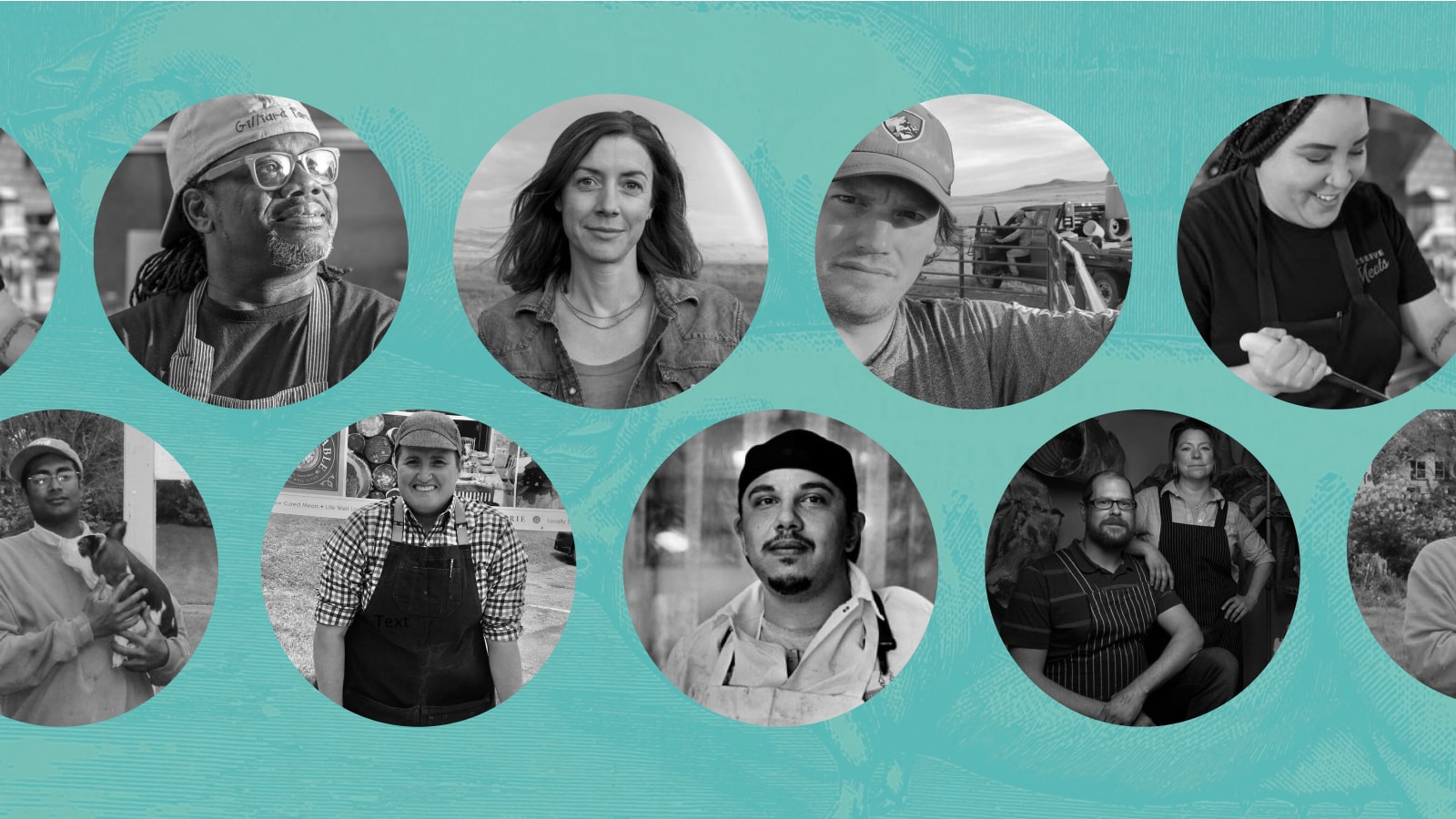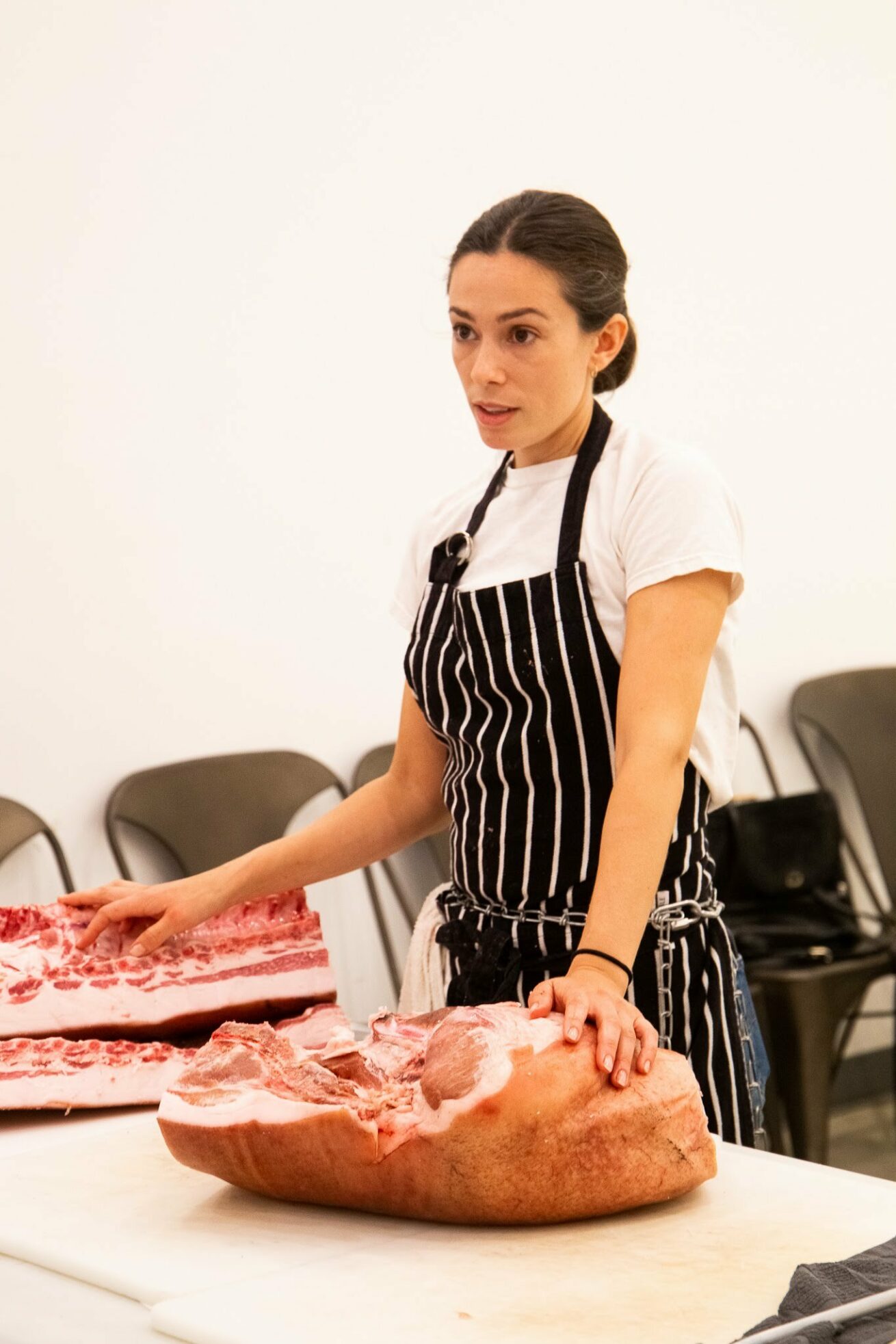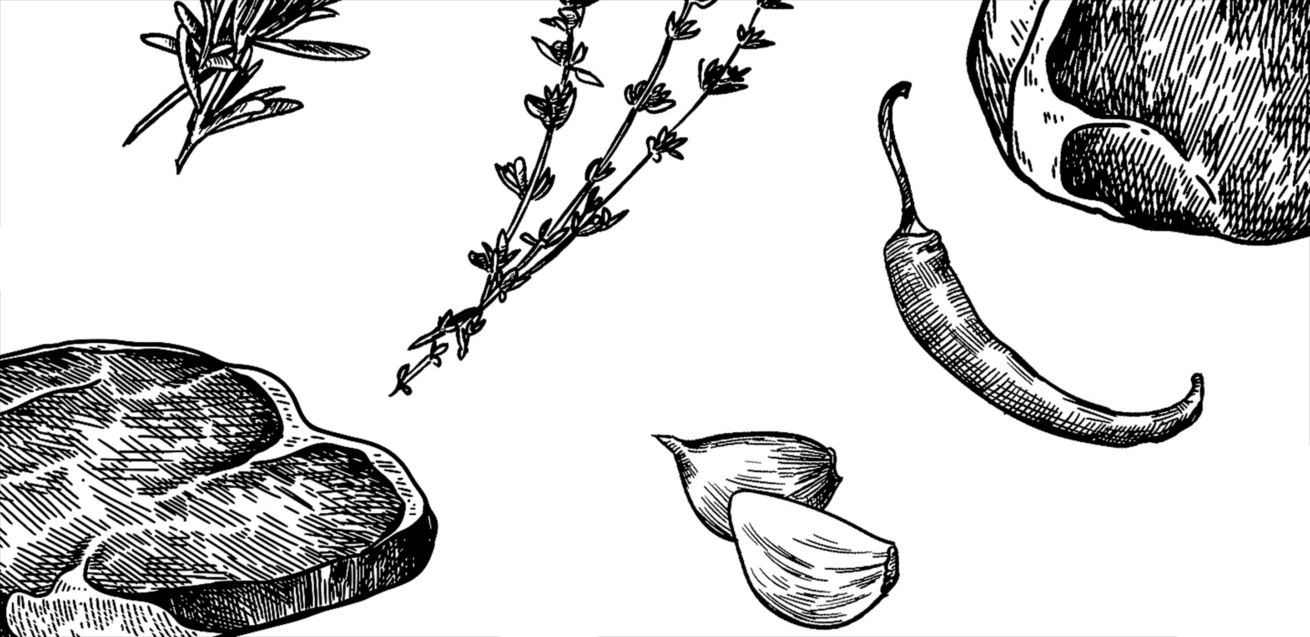Good Meat BreakdownGood Meat® Snapshots
McCullough Kelly-Willis


McCullough Kelly-Willis was first exposed to whole animal butchery and the concept of sustainable meat in 2013, while at Reed College in Portland, OR. She signed up for basic pig butchery with the Portland Meat Collective on a whim, and she was hooked.
In the summer of 2013, she moved from Portland to Chicago and decided to find a way to continue learning about whole animal butchery, which led to a six-month stage at The Butcher & Larder. After coming on full-time in 2014, she continued honing her butchery skills and learning about the wide world of charcuterie.
When The Butcher & Larder joined Local Foods in 2015, she began working on the dry curing program, doing months of research and development and making some pretty delicious salami and whole muscle cures along the way.
McCullough now heads the Chicago Meat Collective in the hopes of continuing her own education and creating a wider community of conscious meat consumers here in Chicago.
Describe your business and its uniqueness in the butchery sphere.
The Chicago Meat Collective (CMC) is one of a few meat collectives around the country and is partly inspired by the Portland Meat Collective. I founded the CMC in 2018, and I focus on offering hands-on instruction of whole animal butchery and cooking, open to all levels of experience. These are small classes, accessible to anyone of any skill level or interest. From hunters and professionals to young people who never learned how to cook, to retirees who are looking for something hands-on and engaging. The classes are focused predominantly on butchery skills, with class offerings ranging from whole hog butchery to beef primals, whole lamb, chicken breakdown, sausage making, fileting fish, oyster shucking, and charcuterie making. We offer memberships and à la carte classes.
I am the owner/operator/head instructor at CMC. The brass tacks on what I do is give people an entry point to connect with their food and see more of the whole picture. Most people just see the meat in the styrofoam package, and it’s easy to remain disconnected that way. The whole animal butchery classes are a great entry point for anyone interested in understanding more about our food system. I am willing to teach anyone who is willing to listen, and I believe that hands-on classes are an impactful way to connect.
Tell us about how you source your meat for the collective
I use cattle and hogs from La Pryor Farms, Kilgus Farmstead, Willow Creek Ranch, McElroy Farms, and other smaller operations. Some of these producers deliver to the city once or twice a week so I can order just 5 days ahead. Other times I have to get a bit creative - I have even met people in parking lots to secure meat, or had to buy a live animal and arrange for a field slaughter. We are the only meat collective operating in a city of this size so there are two sides of the coin, sometimes I must travel further to find producers, but we are also a city embedded in an extensive ag landscape with pathways that already exist.
How long have you been doing this?
I started cutting meat in 2013, so just around 10 years ago. I graduated college and took a class at the Portland Meat Collective with Camas Davis and then moved to Chicago and was excited about learning more about food systems through whole animal butchery. I was an apprentice at Butcher & Larder with Rob Levitt, and I learned a ton from him and my coworkers. I worked there for four and half years cutting whole animals, dry curing, and making fresh sausage. Rob brought a culinary background into the operation which was a benefit as a young person, and it was a good crash course.
How do you define your Good Meat® values?
My values are constantly shifting as I understand more about the ag landscapes and what farmers are up against. I didn’t have as close of a connection with producers until recently since I live in a city; most of my experience was essentially as a meatmonger. During the pandemic, I made a point of visiting more farms and slaughterhouses, so I could understand more about that part of the process.
My big values are food systems that can support good treatment of people who are working in them, the animals that are being raised and slaughtered, and the land that is being impacted. I see that play out in so many ways. I work with some farms that don't have the capacity to rotationally graze but are trying to own as much of their profits as they can, creating local jobs, and bringing the best product they can to the market. Other producers I work with put land before everything else which is incredible to see, being a millennial with climate dread, but that is not within reach for all producers all the time. Seeing the way that livestock can positively impact the land is inspiring and I hope their example shows consumers and producers that there are sustainable ways to farm and to eat.
How did you become a Good Meat® butcher/advocate?
I’ve been a meat eater my whole life, but I started to question it in college. I was grateful that the Portland Meat Collective existed because I had questions about whether it’s possible to engage with meat products in ethical ways. That was the genesis of my interest. As a butcher in a specialty retail space, you need to inform the customer of cuts they’ve never heard of or explain the price point in regard to the work behind the product, which engaged my inclination towards teaching. I’ve always loved to teach, I actually used to teach sailing even though I wasn’t very good at it. I would not have gotten into cutting meat if I hadn't been doing it in a way that was based on craft and sustainable sourcing. It’s a privilege to work in this sphere.
Having been in a retail setting in a city, it's been fun for me to go out and meet producers. Last year I took a road trip and visited producers in Montana including North Bridger Bison. I did not witness a field slaughter there, but I did get to see one at McElroy Farms in Michigan. That experience was helpful in understanding the beginning of the supply chain and allowed me to speak to it in class. It’s made me more open to using whatever type of product comes in front of me because ultimately there was still a life behind it. I also did a stage at a USDA processing plant, working on the cutting line and understanding exactly the amount of work required to process animals. It can feel overwhelming to think about the ag system and how big it is. Spending more time around slaughter has helped me understand how labor and value interact throughout the chain.
What is one thing you wished more consumers knew about buying meat?
I wish consumers were a little more adventurous in the kitchen. It’s an education issue. It takes so much understanding of cooking to go to the store and be open-minded about what you’re going to buy, and not sticking to a recipe. However, it is rewarding once you can feel confident in making whatever you have on hand in your kitchen. I often cook out of my chest freezer and I find that I have more fun cooking this way, and I’m more creative.
What meat, or meat dish, do you eat most regularly and what do you eat for a special occasion?
I am definitely a sausage person. I love spicy Italian sausage and try to always have it in my fridge. I add it to pasta, dark leafy greens, and soup. It is comforting, nourishing, and easy to cook. I’m also a big slow-cooking person (in my Dutch oven), and I love braised meats. I love making bolognese, a classic Texas chili, beef stew, etc. Steak is not a special occasion for me in the usual sense. It’s what I go to when I’m tired and need something simple, fast, and satisfying. That’s when I want a NY Strip or a ribeye.
For special occasions, I go for braised meat again. Stew, a roast, anything in a tagine - something that takes time and care and comes out succulent and tender.
What is one of your biggest challenges as an owner of a meat collective?
I'm someone who doesn’t always ask for support when I need it. I’ve been doing this alone, but I have volunteers. I consider all of my farmers to be part of the meat collective as well and they help me out if I forget to order something for a class. I’m not great at promoting myself and have been grassroots and building slowly, which has worked so far but is definitely a limiting factor. I also do not have enough time to do everything as far as consumer education. CMC is a local organization that values person-to-person interaction. I consume a ridiculous amount of internet media aside from the collective and I wish I had the time to do that more for CMC. I could reach more people if I made more content. That tends to be the one thing that falls by the wayside, which is a challenge of running this business by yourself.
Our growth will have to involve more accessible content that people who aren't in the Chicago area can engage with. I love to travel and sometimes teach workshops for the LEE Initiative in Louisville. Connecting with instructors like me and plugging us into institutions that have a different or bigger audience is important. Although this is not the primary direction of CMC, I have done retail in the past through Farmer’s Markets which was a fun experience because of my past retail experience. I am also slowly launching a small jerky project right now, and I occasionally facilitate meat shares. I often find myself incubating other ways for people to engage with good meat. The focus of CMC is truly education and helping consumers feel more connected to their food.
Good Meat® Snapshots
Popular Links

Transparency in meat, from pasture to plate.
Practical tools and a national directory to help you choose—and champion—ethical and responsible meat.